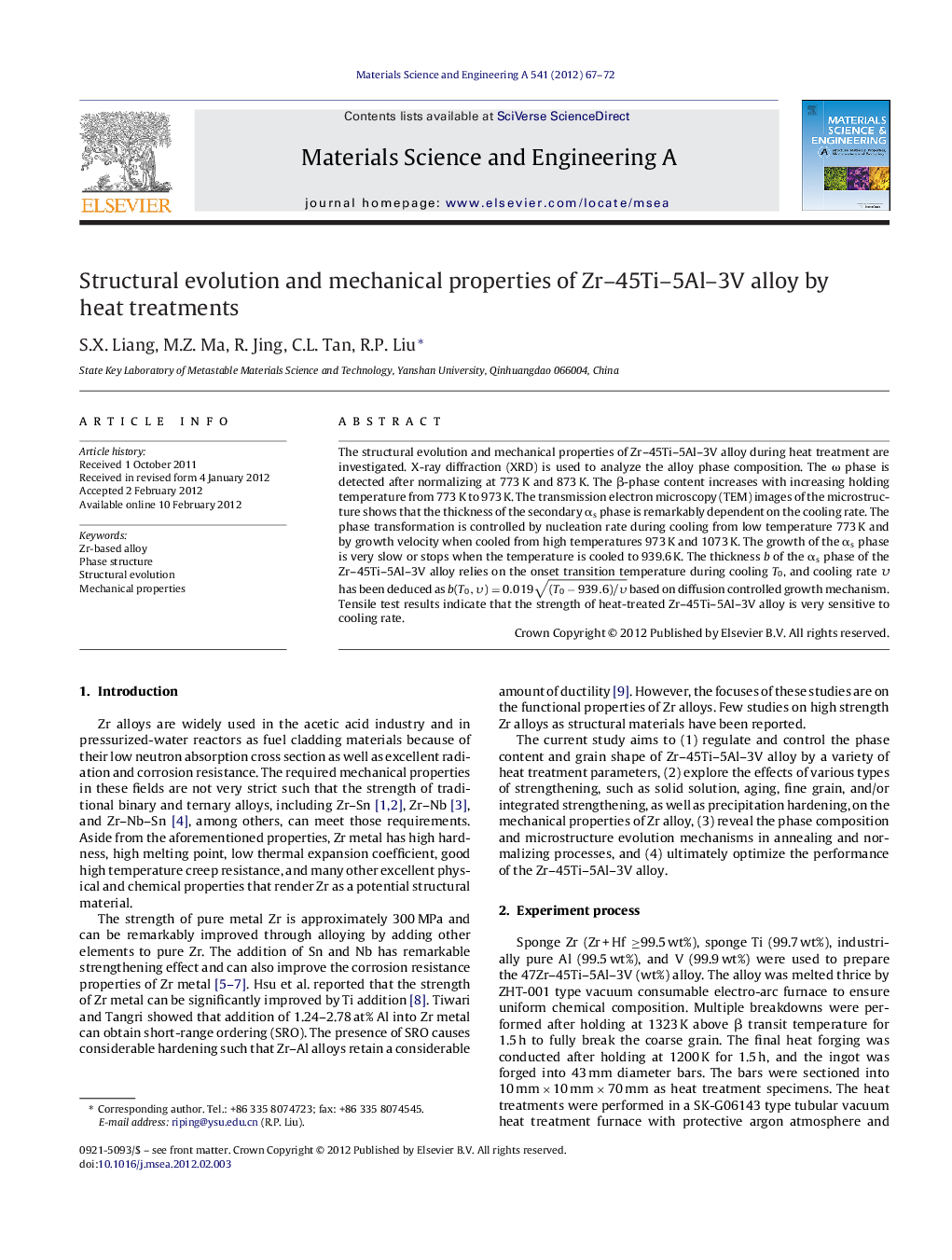| Article ID | Journal | Published Year | Pages | File Type |
|---|---|---|---|---|
| 1577346 | Materials Science and Engineering: A | 2012 | 6 Pages |
The structural evolution and mechanical properties of Zr–45Ti–5Al–3V alloy during heat treatment are investigated. X-ray diffraction (XRD) is used to analyze the alloy phase composition. The ω phase is detected after normalizing at 773 K and 873 K. The β-phase content increases with increasing holding temperature from 773 K to 973 K. The transmission electron microscopy (TEM) images of the microstructure shows that the thickness of the secondary αs phase is remarkably dependent on the cooling rate. The phase transformation is controlled by nucleation rate during cooling from low temperature 773 K and by growth velocity when cooled from high temperatures 973 K and 1073 K. The growth of the αs phase is very slow or stops when the temperature is cooled to 939.6 K. The thickness b of the αs phase of the Zr–45Ti–5Al–3V alloy relies on the onset transition temperature during cooling T0, and cooling rate υ has been deduced as b(T0,υ)=0.019(T0−939.6)/υ based on diffusion controlled growth mechanism. Tensile test results indicate that the strength of heat-treated Zr–45Ti–5Al–3V alloy is very sensitive to cooling rate.
► The temperature interval of α + β two-phase region is from 930.7 K to 1062.6 K. ► ω phase was detected after normalizing at 773 K and 873 K. ► An approximated relationship b(T0,υ)=0.019(T0−939.6)/υ was deduced. ► Mechanical properties were sensitive to cooling rate.
